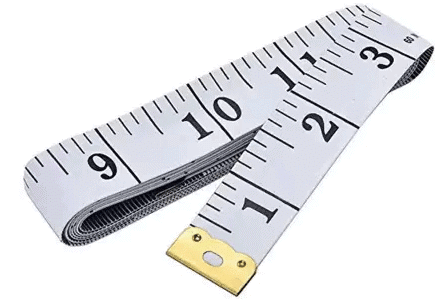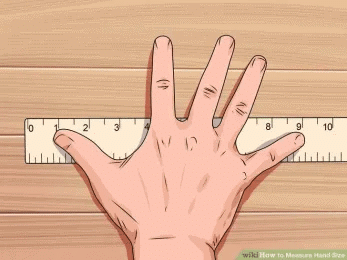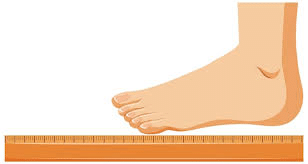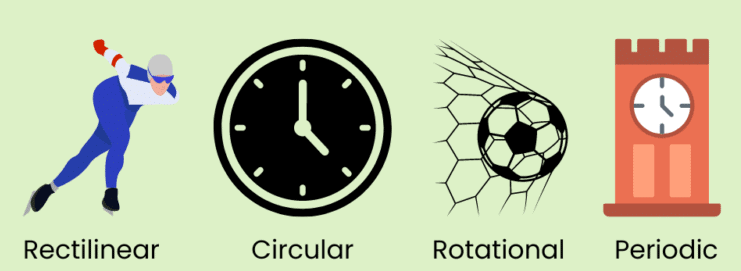Short & Long Question Answers: Measurement of Length and Motion | Short & Long Answer Questions for Class 6 PDF Download
Short Answer Type Questions
Q1. Give two examples of rotational motion.
Ans: Examples of rotational motion include:
- The motion of a wheel, gears, and motors.
- The motion of the blades of a fan.
Q2. What is the significance of the metre in the International System of Units?
Ans: The metre is the fundamental unit of length in the SI system. It provides a standard measurement used worldwide, which helps ensure accuracy and uniformity in science, engineering, and daily life.
Q3. How can you measure the length of a Curved line accurately?
Ans: To measure a curved line accurately, place a flexible thread or tape along the curve, mark the endpoints on the thread, then straighten it and measure its length with a ruler or measuring tape.
 Measuring Tape
Measuring Tape
Ans: A reference point is a fixed, known location used to measure the position or distance of another object. It helps us know if an object has moved and is essential for accurate distance measurement.
Q5. Why are flexible measuring tapes preferred for measuring the girth of objects?
Ans: Flexible tapes can bend and wrap around curved or irregularly shaped objects, allowing precise measurement of their circumference or girth, unlike rigid rulers.
Q6. What do you and your friends discover when you compare the handspans?
Ans: We find that handspan sizes differ among individuals, so using body parts as a measure is inconsistent. This shows the need for standard units for accurate measurement.
 Handspans
Handspans
Ans: Oscillatory motion is a repetitive back-and-forth movement about a fixed point, while linear motion moves in a straight line and circular motion follows a circular path.
Q8. Why do we not use a footstep as a standard unit of length?
Ans: Footstep lengths vary from person to person, making them unreliable for standard measurement. Standard units like the metre provide consistent and uniform measurement.
 Footstep
Footstep
Long Answer Type Questions
Q1. Why is it important to use standard units of measurement in everyday life?
Ans: Using standard units of measurement in everyday life is crucial for several reasons:
- Consistency: Standard units ensure that measurements are uniform across different contexts.
- Accuracy: They help in obtaining precise measurements, reducing the chance of errors.
- Clear Communication: Standardised measurements facilitate better understanding and comparison.
- Reliability: In fields like science, engineering, and trade, standard units are essential for dependable results.
Q2. How the measurements using body parts to measure length were considered inconsistent?
Ans: Using body parts to measure length is often inconsistent for several reasons:
- Different individuals have varying sizes of body parts, such as handspans, foot spans, and strides.
- For example, one person's handspan may be longer than another's, leading to different measurements.
- This variability highlights the need for standard units of measurement.
Q3. Define motion. What are different types of motion?
Ans: Motion is the process of changing position or moving from one place to another. The different types of motion include:
- Translational motion: Movement in the same direction covering equal distances over time.
- Linear motion: Movement along a straight line.
- Circular motion: Movement along a circular path.
- Rotational motion: Movement around an axis.
- Periodic motion: Movement to and fro about a fixed point.
- Vibratory motion: A fast back-and-forth movement.
 Motion
Motion
Q4. Describe the process of using a thread to measure the length of a curved line.
Ans: To measure the length of a curved line using a thread, follow these steps:
- Place the thread along the entire curve, ensuring it follows the shape accurately.
- Mark the endpoints on the thread.
- Straighten the thread and measure it with a ruler or measuring tape.
This method provides an accurate measurement of curves, which cannot be measured with straight scales.
Q5. Explain the significance of the International System of Units (SI) and its impact on global measurements.
Ans: The International System of Units (SI) is crucial for several reasons:
- It provides a standardised set of measurement units used worldwide.
- Facilitates international trade and scientific collaboration.
- Ensures measurements are consistent and comparable across countries.
- Reduces misunderstandings and errors in communication.
The SI system includes essential base units such as:
- Metre (m) for length
- Kilogram (kg) for weight
- Second (s) for time
FAQs on Short & Long Question Answers: Measurement of Length and Motion - Short & Long Answer Questions for Class 6
| 1. What is the standard unit of measuring length in the metric system? |  |
| 2. How can we measure the length of curved objects accurately? |  |
| 3. What are some common instruments used to measure length? |  |
| 4. How does motion relate to the measurement of length? |  |
| 5. Why is it important to use standard units of measurement in science? |  |

















